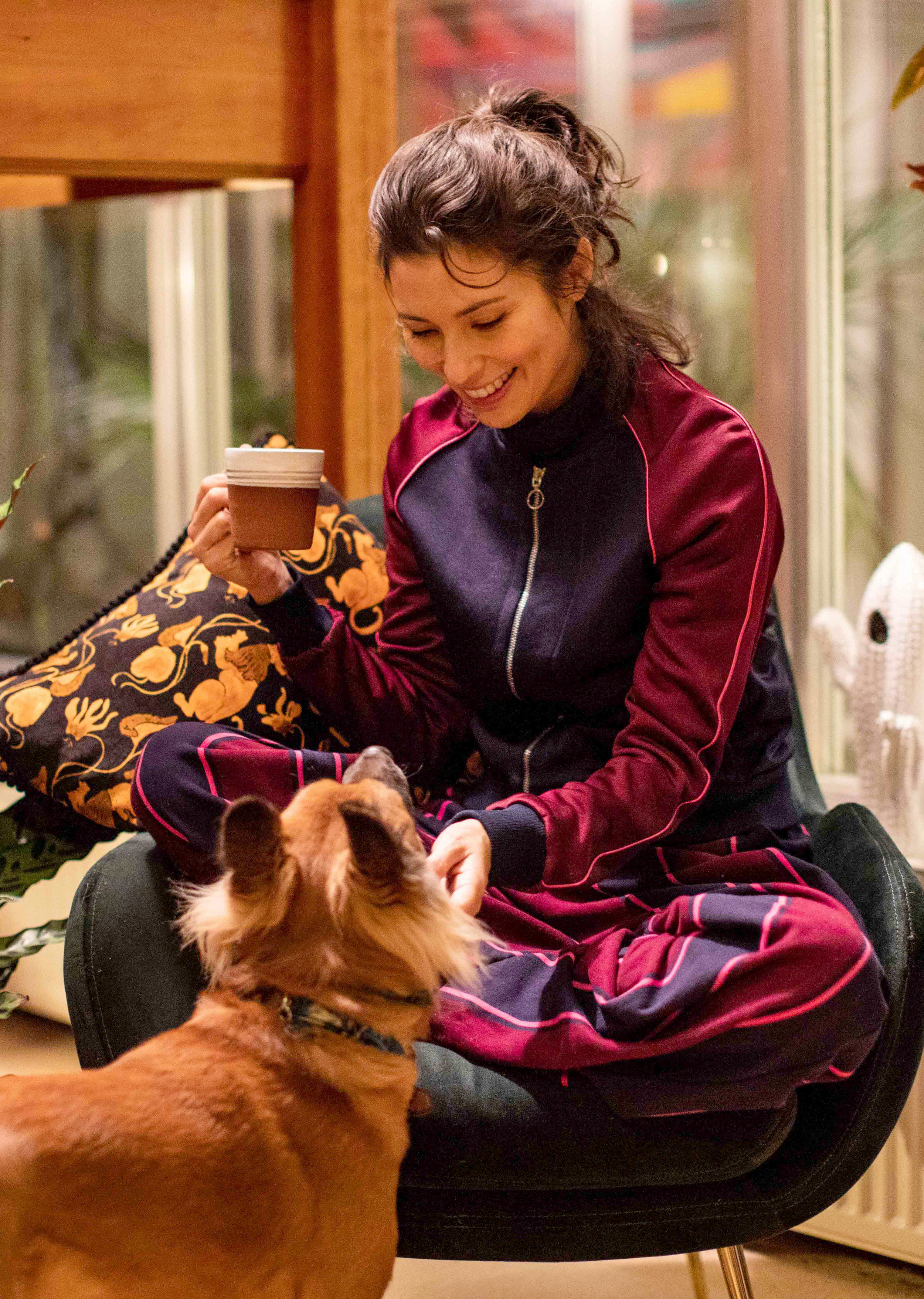7 WAYS TO MAKE YOUR HOME SUPPORTIVE DURING THE COLD SEASON
We all know the feeling — it’s getting cold outside and while you may be tucking into lovely, warming, balanced foods, doing your best to get a good night’s sleep and practising self-care, you still feel groggy and wake up with a case of the sniffles in the morning. It could be that your home isn’t geared up for the season as much as you are. There are some easy ways for you to make sure your house is supporting you through the cold months — keep reading for my top tips.
1. FILL A THERMOS WITH HOT WATER
Even if you’re at home, save yourself the faff of going back and forth between the kettle and your work station by filling a thermos (or insulated bottle) with hot water or herbal tea to pour and sip on throughout the day. I always keep hot water around, as Ayurveda tells us drinking cold or room temperature water can dampen the Agni.
2. SWITCH YOUR ELECTRIC BLANKET FOR A HOT WATER BOTTLE
If you’ve traded your childhood hot water bottle for its high-tech cousin, the electric blanket, it may be time to go back old-school. Electric blankets emit low-frequency electromagnetic fields, which some researchers believe is linked to health risks, not to mention they use extra energy.
3. KEEP YOUR ROOM COOL AT NIGHT
Rather than keeping your home temperature level all day, mimic the cycle of the sun. By all means, have your heating on so that it’s warm when you come in, but set it so that it starts to cool down before bed to support the natural circadian rhythm that your body understands. If your bedroom is too hot it can upset the rhythm and therefore the quality of your sleep. Then programme the heater to come on and warm up for you in the morning so it’s pleasant when you wake up. Bonus: you will save both money and energy this way.
4. DIY A SLOW COOKER HUMIDIFIER
A humidifier is a huge help when the temperatures dip, to help you sleep without your sinuses giving you grief. If you don’t already own a humidifier, you can easily make your own using a slow cooker! Just fill it with water and leave it on the low setting with the lid off overnight. You can set it up in your bedroom, but just make sure it’s far enough from you so you won’t burn yourself when you get up.
5. REPLACE YOUR LIGHTBULBS WITH AN AMBER GLOW VERSION
Fit some amber glow lightbulbs onto lamps and even main ceiling lights, so that when you get home in the evening you can get in the groove with your circadian rhythm. It’s a great way to enjoy low-level lighting that won’t upset melatonin and therefore your sleep, as opposed to using the daylight-mimicking, bright blue-white light from standard lightbulbs (as well as the standard setting on your screens and devices) — check out this article about blue light here. You could also do it the old-fashioned way and live by candlelight — just be careful with the type of candles you buy to make sure you’re not introducing low-level toxicity into your home - look for candles made without paraffin, artificial fragrance or metal wicks. This number from Shiva Rose and the whole line from NEOM Organics are great picks.
6. ASK FOR A BODYCLOCK LIGHT FOR CHRISTMAS
While we’re on the subject of light which is very important all year round but even more so in winter, especially if you spend most of the daylight hours indoors, a bodyclock light/SAD lamp is a great way to live according to the sunlight and help your system adjust to the season. You can either have 2 separate lamps — an alarm that wakes you up with progressive lighting and a SAD lamp that exposes your body to more light than you might get otherwise at this time of year and helps prevent seasonal affective disorder — or one lamp that does both. The goal is to get adequate daylight during the day and a candlelight-type glow in the evening. Importantly, make sure to set any of your devices that allow it to automatically switch to this more orange or amber light after sunset. Don’t forget to look at the blue light article here if you haven’t already!
7. INSTALL AN INFRARED HEATER
Get an infrared heater for a healthy kind of heat, like you’ll find in yoga studios and spas. This heats directly what’s in front of it rather than the air, which is also more economical and means that it doesn’t churn up dust like a fan heater or a normal radiator which works by convection. It’s also more eco if you have an open-plan home so that you’re not just heating the upper levels, but rather the area that you are sitting in.


